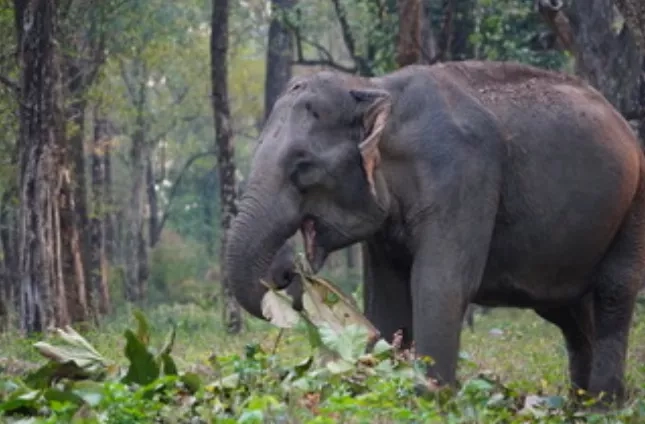Nine scholars in Bhutan spent the summer of 2020 working with NASA staff and scientists as part of a multiyear Interagency Agreement with the U.S. Department of State. The goal is to strengthen the foundations of science, technology, engineering and mathematics in Bhutan through expanded use of Earth observation information and data.
The summer 2020 scholars are in the Capacity Building program area's DEVELOP program, which fosters the next generation of scientific leaders and Earth observation users. The initiative pairs participants and partner organizations for 10-week interdisciplinary projects that apply NASA Earth observations to community concerns around the globe.
The Bhutan scholars focused on two projects, one on modeling Asian elephant habitats and another on assessing trends in precipitation and temperature to inform climate mitigation practices. On Friday, August 7 they presented their work to members of the U.S. State Department as well as officials from NASA and Bhutan.
Modeling Asian elephant habitat suitability were Palchen Wangchuk, Tashi Choden, Kuenley Pem Dem, Sonam Choden and Kelzang Jigme. They produced and use and land cover maps to create an elephant habitat suitability model, which will be used by decision-makers to identify areas needing wildlife corridors.
The NASA Goddard Space Flight Center-based team used data from NASA's Terra satellite, the Shuttle Radar Topography Mission (STRM) and the Landsat series of satellites which are a partnership between NASA and the U.S. Geological Survey (USGS). Their project showed the importance of roads and waterways to the occurrence of elephants and showed the best places for "camera traps."
Studying water resources in Bhutan were Kinley Dorji, Tashi Kaneko, Tenzin Wangmo and Deki Namgyal. They provided a trend analysis of precipitation from 1996 to 2017 and reviewed temperature changes.
Based at NASA Marshall Space Flight Center, the team used satellite data from Terra in addition to the Global Precipitation Measurement mission, a joint NASA and Japan Aerospace Exploration Agency (JAXA) project. They found that the satellite data suggests that Spring is arriving later and later each year in Bhutan.
Both teams included members with interdisciplinary backgrounds ranging from psychology to civil engineering, global supply chain management and international business. Looking ahead to future work supporting science and technology in Bhutan, the DEVELOP will continue to host Bhutanese scholars for ten-week internships during the summers of 2021 and 2022.








